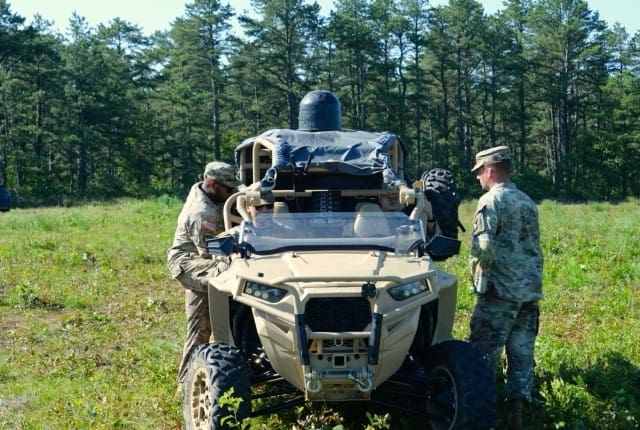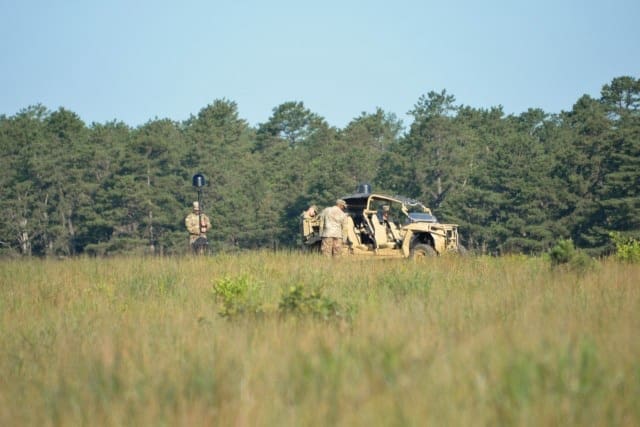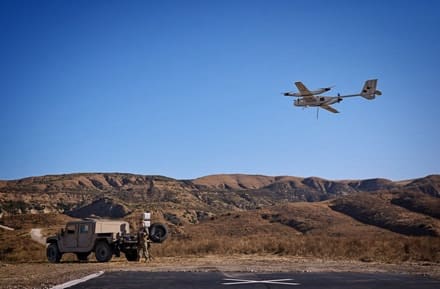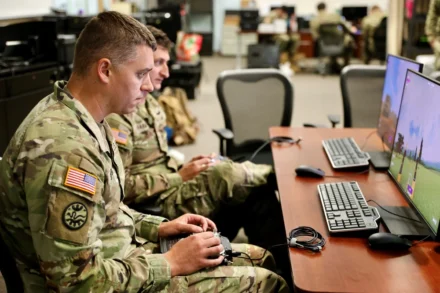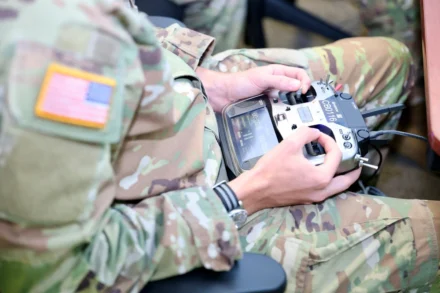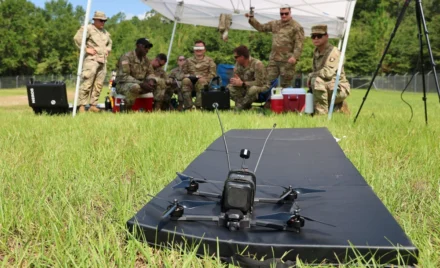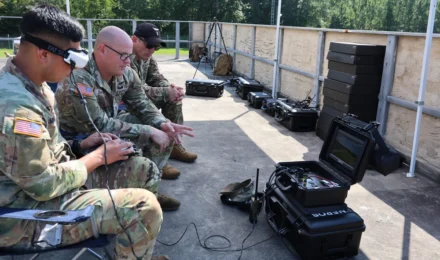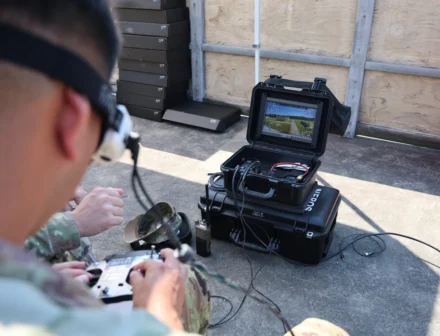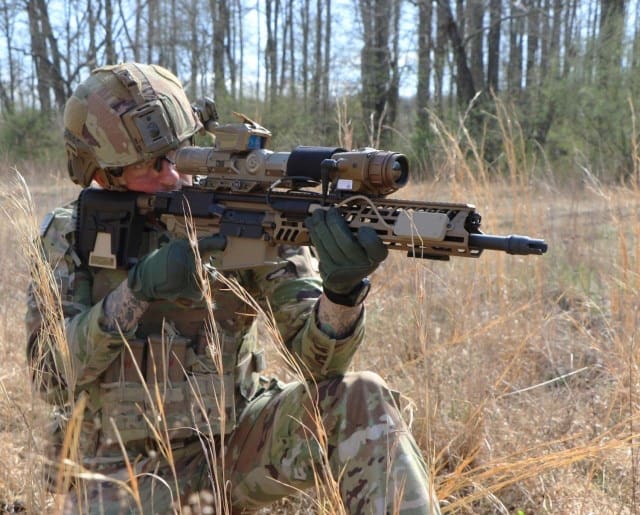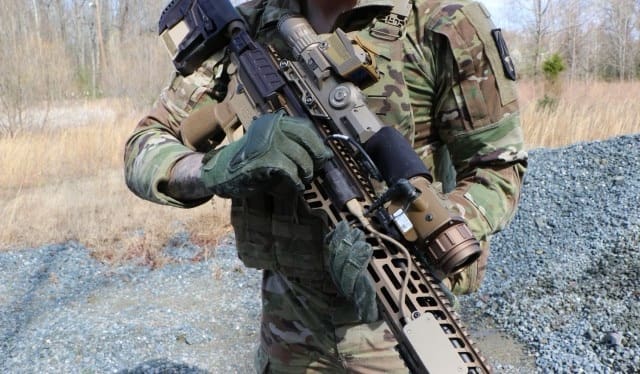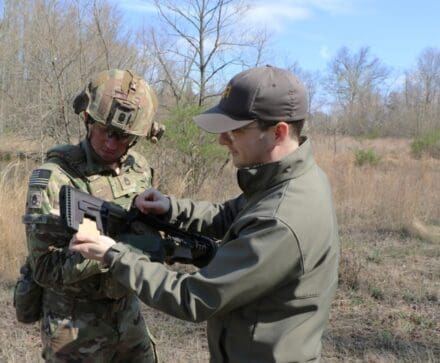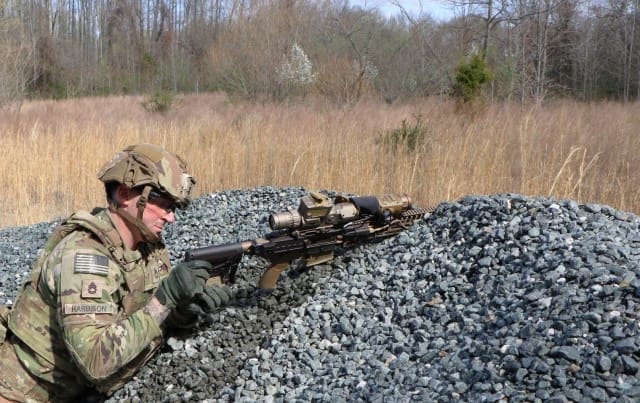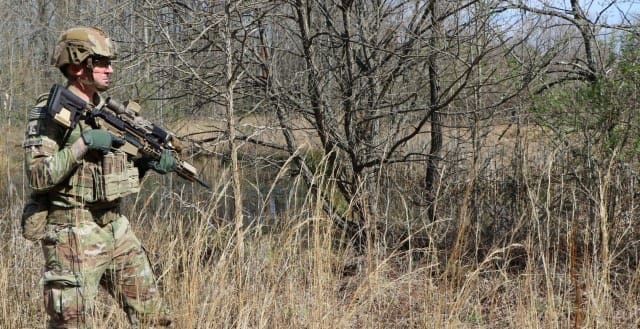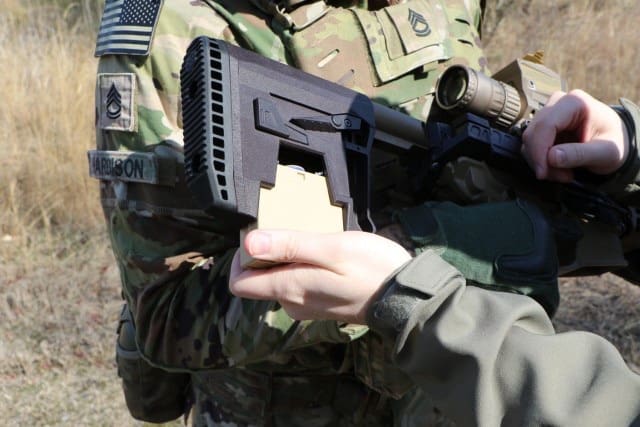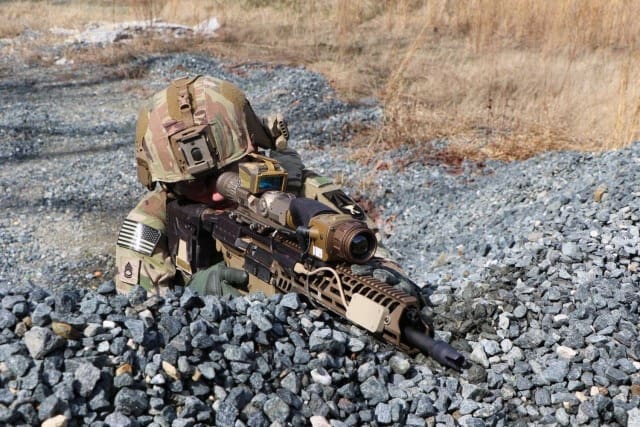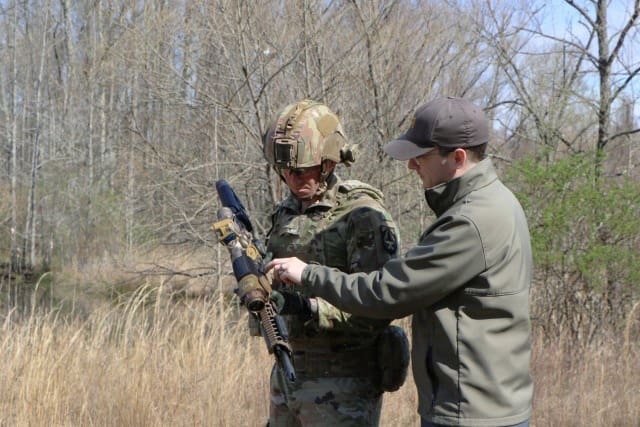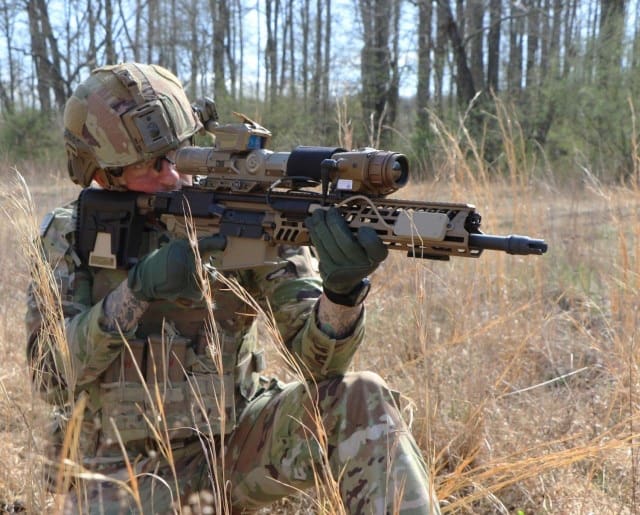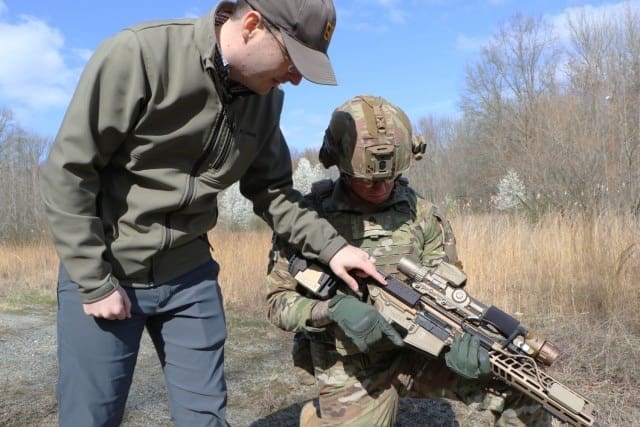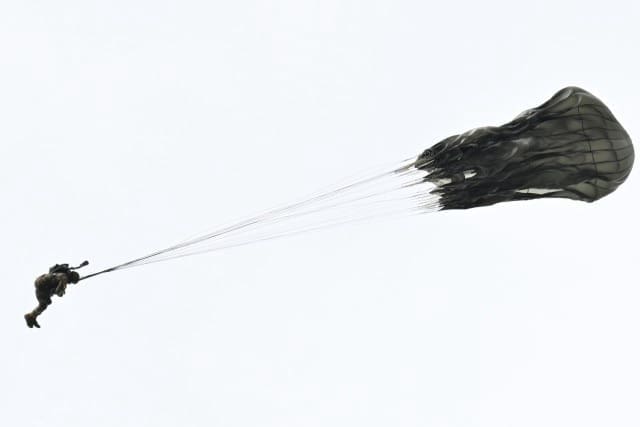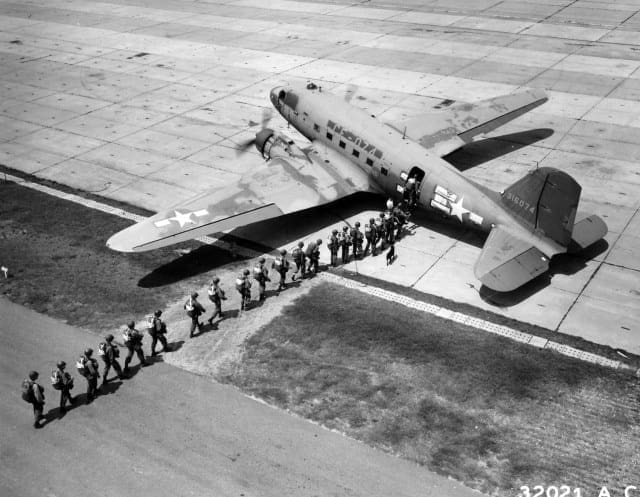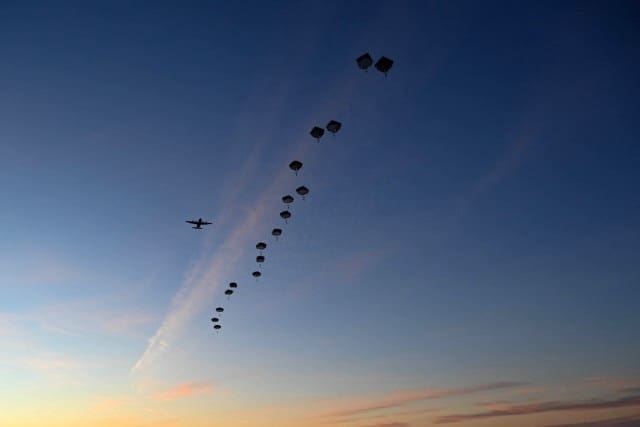A major milestone has been achieved for the Autonomous Multi-Domain Launcher as it moves toward augmenting — and possibly replacing — existing Army launchers.
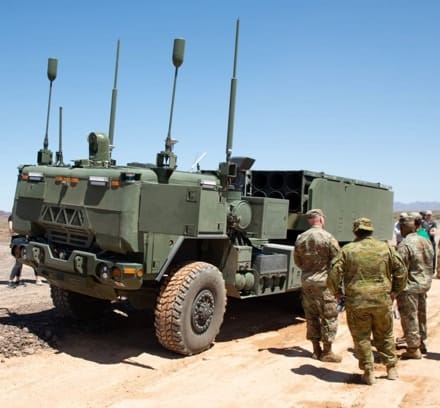
AML, a science and technology initiative led by the U.S. Army Combat Capabilities Development Command’s Aviation & Missile Center and Ground Vehicle Systems Center since 2020, has transitioned to the Rapid Capabilities and Critical Technologies Office, marking the next step in its journey towards fielding.
This transition comes with a new name, a nod to the expansion of its capabilities: Common Autonomous Multi-Domain Launcher, or CAML, as RCCTO pursues two iterations of the system — a medium and a heavy.
“AML started in February of 2020 as a congressional add-funded concept demonstration,” said Lucas Hunter, AML principal investigator and project lead at DEVCOM AvMC. “The Long-Range Precision Fire Cross Functional Team asked what the possibility of driving and firing a High Mobility Artillery Rocket System launcher from a remote location. HIMARS is 100% manual. It is driven manually. The gunner’s display unit has switches and buttons that you push, and a manual keyboard. While the mission comes in digitally, what you do to fire it is all done manually.”
The two DEVCOM centers procured a HIMARS and got to work determining how to install robotics capabilities into the vehicle. The catch? They had to return the HIMARS just as they received it: which meant no drilling and no welding. By summer 2021 they had their prototype, and their first test was a successful live fire in front of an audience of Army generals.
“In support of DEVCOM AvMC’ s project office, Detroit’s DEVCOM GVSC leveraged its deep roots in automotive and defense to deliver a robotic HIMARS in record time,” said GVSC Robotic Fires Branch Chief Colin Scott. “The centers’ close working relationship leveraged each center’s unique expertise to catalyze industry, bringing together best-in-breed solutions redefining Army fires for the 21st century.”
Over the next four years, they transformed that concept demonstrator into a fully unmanned, cab-less, autonomous launcher. In doing so, lethality of the launcher was doubled while the original mobility and transportability of its former HIMARS self was maintained.
“The team leveraged previous Army S&T investments in launcher, autonomy and power generation, incorporating direct Soldier input to produce the AML prototype rapidly and economically. This effort culminated in the AML participating in Valiant Shield 24, setting the stage for transition,” Hunter said.
RCCTO will serve as that bridge to move forward with AML as a formal program of record if the Army chooses to pursue the prototype program. The organization manages the transition of successful prototypes into official acquisition programs, setting the conditions for full-rate production and fielding. By taking proven technology and refining them into more robust prototypes, RCCTO gets promising S&T efforts like AML into Soldiers’ hands for experimentation and feedback much faster than traditional acquisition programs.
Part of how CAML will redefine Army fires is with its autonomous missile reloading capabilities. The larger CAML-H variant will integrate a launcher onto a 15-ton class chassis that will fire the Tomahawk Land Attack Missile or the Patriot Advanced Capabilities Three Missile Segment Enhancement interceptor. Its smaller CAML-M counterpart will utilize a Family of Medium Tactical Vehicles to launch Multiple Launch Rocket System munitions or the new Indirect Fire Protection Capability with AIM-9X interceptors.
“The key thing Lucas’s team did was give the hardware such a good look that senior Army leaders took that and expanded upon it,” said Brad Easterwood, CAML deputy product manager at RCCTO. “They gave them such a good building block that they could add other building blocks to it and have a different solution.”
As RCCTO bridges the “valley of death” between S&T and program of record, DEVCOM AvMC will remain the technical experts for everything fire control missiles.
“DEVCOM AvMC is doing a great job transitioning all the lessons they’ve learned, so we don’t repeat the same mistakes as we go into a prototyping phase,” Easterwood said. “We feel like we have a leg up with DEVCOM AvMC as a partner, because they’ve already solved all these hard challenges and we’re not starting at zero. Bringing in DEVCOM AvMC as a teammate keeps us moving forward with no drop in knowledge.”
For Hunter and his team, their continued involvement in the future of CAML has been very rewarding as well as a unique experience in the S&T world.
“It is rare for an idea to go from concept to prototype and actually make that transition,” he said. “It is really exciting to see the work that the team produced over these five years getting out of the lab and making it into a transition partner that can take it to the force and make a difference.”
Via U.S. Army Combat Capabilities Development Command’s Aviation & Missile Center and Ground Vehicle Systems Center



